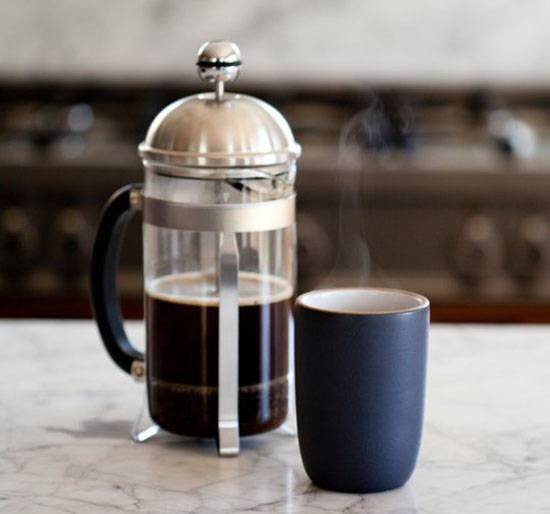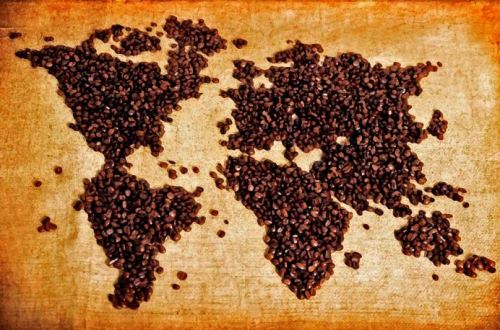Espresso course: the Art of espresso-Brewing the best Espresso

1. Moderate grinding is necessary-- GRIND IS CRITICAL
The ideal degree of grinding (combined with the right amount and moderate tamping) will enable the Espresso to drip into your cup at a steady and slow speed. If you grind too coarse, the water is easier to pass through the coffee powder, Espresso will flow out faster, the taste will be more insipid, if the grinding is too fine, the water is not easy to flow out, but slowly dripping out, the dripping will be more bitter coffee. If you are using a low-pressure Espresso machine, please have the same grinding degree as the drip filter coffee machine, and the general household blade grinder can meet your needs. If you are using a professional, high-pressure machine, you need a fine degree of grinding; the beans you use also need to be professional. Two Espresso.
Even if there is only a slight difference in the degree of grinding, there will be a big difference in the modulation of Espresso. Moreover, because the coffee powder specially ground for Espresso is very fine and easily deteriorated by moisture, it is recommended that you grind the coffee beans before cooking Espresso to ensure the best quality Espresso.
Second, determine the right amount-- DETERMINING THE CORRECT DOSE
Coffee powder almost fills your coffee filter, but leaves room for coffee powder to expand and stretch when it comes into contact with water. If the amount is too small (like grinding too coarse), the water is easier to pass through the coffee powder, Espresso is ejected at the speed of the flow, Espresso will be insipid; if the amount is too large, the opposite is true.
Third, tamping-TAMPING
Use a tamper to flatten the force of coffee powder in the filter. If the tamping pressure is moderate, the water will slowly pass through the coffee powder and extract all the good taste of the coffee.
When the water comes out too fast, you may need to grind the coffee finer or tamp it harder. On the other hand, if the outflow speed is too slow, you need to press the coffee thicker or tamp it lighter.
Fourth, the cooking time-- RATE-OF-POUR
The ideal cooking time for Espresso is like the rate at which a tablespoon of honey drips down from the spoon. If you can fully grasp the time of grinding, serving, tamping and cooking, you will be able to cook a good Espresso with good flavor.
Ideally, a single serving of Espresso should be dripped in about 20 seconds, producing 30ml's Espresso; and a double Espresso, using a double coffee filter and doubling the coffee powder to boil 60ml's Espresso at the same time.
5. Less is better-LESS IS MORE
A common mistake in cooking Espresso is to cook more Espresso from the same portion of coffee powder. For example, a first serving (7g of coffee powder) can boil 1 ounce (30ml) of Espresso. If you brew 60 or 90ml, the coffee will become light without bitterness. It doesn't feel like Espresso, but rather like stronger dripping coffee.
6. Household ESPRESSO machine-- HOME ESPRESSO MACHINES
If your need is to occasionally enjoy a mellow latte with three or five friends, then you can consider a less expensive home model, but if you like pure espresso very much, or if you often share a cappuccino with a large group of friends, then you may need to invest in a professional espresso machine and bean grinder.
A coffee pot cooked directly on the stove, or a generally inexpensive cappuccino machine (compressing coffee with sink pressure rather than piston pressure), can brew Italian coffee at home, but it does not generate enough pressure to produce real espresso, and the power of steaming milk is also quite limited.
Source: Internet
Important Notice :
前街咖啡 FrontStreet Coffee has moved to new addredd:
FrontStreet Coffee Address: 315,Donghua East Road,GuangZhou
Tel:020 38364473
- Prev

Coffee brewing method: how to make fragrant and delicious coffee in French pressure pot french press
When we look back at every morning accompanied by coffee, the simple joy and serenity is self-evident. The French kettle is one of the simple and cheap ways to make the perfect coffee. Here we will teach you step by step how to use the kettle to make a good cup of coffee. The method of making coffee by using the advantages and disadvantages of french press is to soak the coffee powder first.
- Next

Coffee tasting knowledge: [five schools]-Coffee bean taste classification from different areas
Sour Pie Mocha, Hawaiian Sour Coffee, Mexico, Guatemala, Costa Rica High Real Estate, Gillimazaro, Colombia, Zimbabwe, El Salvador, Western Hemisphere washing Advanced New Bean bitter Pie Java, Mantenin, Bogota, Angola, Congo, Uganda various kinds of Old Bean Sweet Pie Colombian Metrin, Venezuelan Old beans, Blue Mountains, Gillimaza
Related
- What is the meaning of lactic acid fermentation with coffee bean treatment?
- How to judge the state of foam by sound?
- How does the latte pull out the unicorn pattern? Come to get for a little trick to improve the flower pull!
- Will flower pulling affect the taste of the latte?
- Do you know the history of coffee?
- The difference between honey treatment and sun washing what is raisin honey treatment?
- What kind of milk can a novice use to make coffee foam to keep the foam longer? The correct method and skills of milking tutorial sharing
- Why do washed coffee beans taste sour? Flavor characteristics of washed Coffee
- Introduction to the skill of how to practice the size and height of water injection around the circle of hand-brewed coffee
- How do beginners practice coffee flower drawing from scratch?

